How Telemedicine App Development is Changing the Healthcare Industry
2 Aug 21 


6000% – that is how much the use of telemedicine shot up during the Covid-19 pandemic.
Of the many transformations that Covid-19 set in motion, the ones in the healthcare industry are remarkable. In three months, ten years’ worth of progress has been made in this traditionally slow-growing industry. The pandemic has helped to accomplish what was long-overdue. By acting as a transformer, Covid-19 has set healthcare services moving at a new pace.
We have witnessed telemedicine app development gain considerable momentum in this period. From what we see, the future seems bright for the telemedicine sector. In this blog, we plan to explore the world of telemedicine and discuss its benefits, features, technologies, and much more!
What is a Telemedicine Application?
The term telemedicine literally translates to “healing at a distance”. According to World Health Organization (WHO), telemedicine is defined as
“The delivery of health care services, where distance is a critical factor, by all health care professionals using information and communication technologies for the exchange of valid information for the diagnosis, treatment and prevention of disease and injuries, research and evaluation, and for the continuing education of health care providers, all in the interests of advancing the health of individuals and their communities.”
In simple terms, it means an approach to connect patients and healthcare providers in a digital environment using advanced technologies. It enables patients and healthcare providers to interact virtually without any location or time restrictions.
It is mostly achieved through mobile and web apps, which are called telemedicine apps. And telemedicine app development refers to the process of building these apps. Such apps enable patients to get better care and healthcare providers to offer their services to more people.
How Does a Telemedicine App Work
The working of telemedicine apps is quite simple and straightforward. It follows the traditional approach to doctor consultation but sets it in a digital realm.
- A patient wanting to book a doctor appointment logs into the app, describes their symptoms and provides medical history.
- They choose a suitable doctor from the list of available doctors and schedule a consultation.
- The doctor may accept or reject the consultation depending on their schedule. The patient will get notified of the same and get guidance for the next action (confirm with payment or check for another doctor)
- Once a booking is confirmed, the consultation happens on the chosen date and time through video or voice call.
- During the consultation, the doctor checks the patient, diagnoses them, and recommends suitable treatments or tests.
- The doctor prescribes medicines digitally through e-prescriptions, guides the patient on how to take them, and assigns the next appointment if necessary.
This is a general flow of telemedicine apps’ working. In today’s scenario, where mobile apps are important for businesses, digital healthcare solutions are becoming a prominent choice of healthcare service providers like hospitals and clinics.
Top Six Benefits of Telemedicine Applications
Good health is something that everyone aspires to have. So, innovations that focus on delivering better healthcare services will always find value among people. In our present healthcare crisis, telemedicine apps fill a lot of gaps through the services they offer. How beneficial are these apps? Let’s take a look.
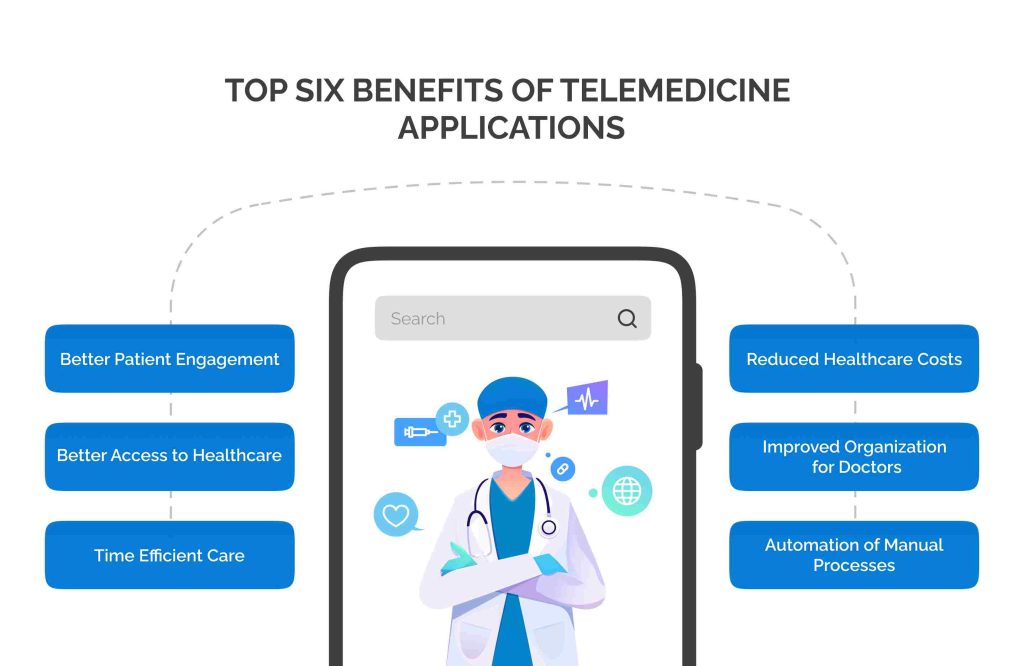
Better Patient Engagement
With telemedicine apps, checking up with patients, following up on consultations, or monitoring conditions is simple and hassle-free. Further, electronic health records ensure that patient information is available to doctors for easy access at any time, which helps to improve the diagnosis and care. It also gives patients options to reach out to doctors in urgent times, making it a life-saving tool in instances.
Better Access to Healthcare
According to the National Rural Health Association (NRHA), there is an uneven distribution of physicals in rural and urban areas. The patient to physician ratio in rural areas is 10000:39, whereas, in urban areas, it is 10000:53. So clearly, rural areas have a shortage of healthcare professionals.
Telemedicine apps can be of great benefit for people in rural locations. If they have a smartphone and an internet connection, they can consult doctors. They don’t have to rely on physical healthcare facilities in their locality. Also, it is possible to consult specialists in other countries through telemedicine apps without any travel or extra expenses.
Time Efficient Care
One of the most frustrating parts of consulting doctors is having to wait for hours for your turn. And if you have to take some tests and see other specialists, it could take forever. Telemedicine apps are blessings in this regard. You don’t have to spend hours waiting in line or travelling to hospitals. Just book appointments from your phone at your convenient time and consult the doctor easily. In fact, telemedicine apps have brought down the time a patient spends in availing healthcare services by 56%!
Reduced Healthcare Costs
The costs associated with healthcare services are pretty high. Much of it can be attributed to the fact that the doctors need a physical working space like hospitals/clinics and its maintenance requires expense. However, with healthcare app development, doctors can offer their services without the need for a physical space.
This is beneficial for self-employed doctors as they can practice independently with minimum investment. And for clinics, it helps to increase customer flow as consultation is convenient and time-effective, thus improving the revenue. The patients may also enjoy the benefit of lower consultation fees.
Improved Organization for Doctors
Statistics state that around 15% of doctors suffer from burnout and depression. There is a scarcity of physicians in general, and it affects the workload of active doctors. They work 60-80 hours a week with no proper organization or management. Telemedicine apps are a way for them to achieve better work-life balance. By employing the app features, they can utilize their time effectively and consult from the comfort of their homes.
Automation of Manual Processes
Paperworks is important in hospitals. Since they are a necessary aspect of healthcare services, it’s impossible to avoid them. We all would have gone through the frustrating process of repeating our personal information multiple times and filling several forms in hospitals. A simple solution to this problem is to create a mobile app. Telemedicine apps bring digitization and automation into these processes. This improves efficiency and eliminates headaches.
What are the Challenges of Telemedicine App Development
Although telemedicine applications have many benefits, it doesn’t attract investors to delve into it as much as it should. Mostly, this is because the healthcare industry has strict guidelines, which introduces several challenges. What are the challenges that must be addressed, we shall see in this section.
- Security: Since the app will be dealing with highly sensitive personal information, security is of utmost importance. Several technological tools and protocols must be implemented to ensure that the highest security is deployed. Features like data encryption, multi-factor authentication, biometric identification, etc., are necessary for telemedicine apps. Further, users of the app must also be trained to ensure that they keep all information confidential.
- Regulatory Compliance: As another measure to reinforce data protection, telemedicine apps must adhere to various regulatory compliances. The aim of these is to protect healthcare information from cyber attacks. Different countries have different standards, like the HIPAA in the US and PIPEDA in Canada. Meeting the standards dictated by these compliances is a challenge.
- Connectivity Concerns: As consultation will be happening over the internet, it is important that both doctors and patients have good internet connectivity. Otherwise, it may cause issues like incorrect diagnosis or inept treatment. Video quality is a major concern if users have to show symptoms or wounds to doctors. Therefore, the telemedicine app should have solid connectivity and streaming capabilities.
Key Features to Include in Telemedicine Applications
A typical telemedicine app development process includes the development of three parts, which are different but interrelated. These are the patient app, doctor app, and admin panel. So what are the features to implement in these three parts? Let’s see one by one.
Telemedicine App Features for Patients
Telemedicine apps are less of a software and more of a service. Hence, it must include features that bring convenience to patients and provide them a satisfactory consultation experience. So, the patient side of the app should include:
- Registration: A person wanting to avail the services of a telemedicine app must register and create an account. Registration can be done through phone numbers, email, or social networks. And since the patients’ accounts will contain sensitive information, it is recommended to implement high security through two-factor authentication.
- Personal profile: Every patient should set up their personal profile with information like name, age, and sex. It should also contain an overview of the patient’s medical condition- such as previous medical history, ongoing treatments, and symptoms.
- Search: The app should have a search feature that lets the patients find necessary specialists quickly. Patients may need to find doctors based on specialization, location, gender, or ratings. A search feature will help them find the doctor that meets their needs.
- Video/Audio communication: It is a key feature in telemedicine apps where doctors and patients connect over the internet. Either audio or video can be used for communication depending on their requirements and comfortability. If there is a need to show wounds or symptoms, video is necessary. Developers need to take care in providing a consistent and good quality video service.
- Chat: There may be instances where communication through audio/video is not required. Chats can be used in such cases. If a minor issue is to be addressed or some image/report to be sent, chats are convenient. It does not require special consultation or distract doctors from their work. Chats must support file attachment options.
- Appointment scheduling: Patients should have the feature to book appointments with the doctors of their choice. The app should let them see the available time slots of doctors and choose a convenient time for their consultation.
- Calendar: To monitor and manage their appointments with doctors, an in-app calendar is a must-have. The patients should be able to see a list of their appointments and also have the option to edit or cancel them if required.
- Payments: Payment is an unavoidable feature. Patients should be able to pay for their visits in a secure manner. They should have multiple payment options, be able to see their transaction history, and conduct high-speed transactions.
- Notifications: Notifications feature that alerts patients about upcoming appointments, consultation reschedule, prescription renewals, etc., are a beneficial feature for patient apps.
- Ratings and reviews: By enabling patients to provide reviews about their appointments, doctors can get valuable feedback. It also helps telemedicine app developers to make any changes to the app’s working. Moreover, it’s useful for other patients while deciding on a doctor for their consultation. Reviews help to understand a doctor’s credibility.
Telemedicine App Features for Doctors
The features that must be included in the telemedicine app for doctors are not entirely different from that of patients’ apps. Some features are quite similar in nature, while some are especially needed for the doctor side alone. Let us take a look at these features.
- Doctor profile: Just like patients, the doctors must also set up a profile where they give information about themselves. Details about the doctors, such as their specialization, qualification, experience, achievements, etc., should be given in their profile. This will help patients while choosing a specialist.
- Schedule management: The doctor app should have a feature that lets doctors manage their schedules. This includes setting their available date and time slots, managing their appointments, and day-to-day schedule. Doctors should also be able to accept or reject appointment requests.
- EHR review: Once an appointment with a patient is confirmed, doctors should be able to view their medical records (EHR). Doctors can check the patients’ medical profiles and preliminary answers. This will give them an overview of patients’ conditions and help to provide better, faster diagnosis.
- Video/Audio communication: Just like patients, doctors should also have the feature to carry out conversations with patients through audio or video as required under the circumstances.
- E-prescriptions: The doctor app should have the feature to create digital prescriptions. Doctors can write e-prescriptions and send them to patients or to other departments in digital format. This is an incredible feature of telemedicine applications.
- Real-time tracking: Telemedicine apps should have a virtual waiting room where doctors can track the status of their appointment. They should be able to see details like the number of consultations completed, pending, and details of upcoming consultations.
- Notifications: Notifications that alert doctors of upcoming appointments are important for doctor apps, just like the patient apps.
Telemedicine App Features for Admin Panel
Apart from the doctor app and patient app, the mobile app development services must also develop the admin panel, which is an essential aspect of telemedicine app development. It is used by admin officials to manage the overall process and working of the telemedicine apps. The must-have features for the admin panel are:
- User management: Admin has complete power over managing all users of the app. They can add or remove users, approve or cancel profiles, confirm consultations, and edit user information.
- Medical records management: All the medical records related to patients, such as treatment history, lab reports, prescription details, insurance documents, are managed by the admin. They can access these documents when needed and are responsible for ensuring its safety.
- Finance management: All the financial transactions occurring through the telemedicine app are managed by the admin. Admin can track expenses, revenue, create invoices, and also accept payments.
How to Develop a Telemedicine Application
Telemedicine app development is a process that requires careful planning and strategizing. Since it is related to people’s health, no amount of carelessness can be accepted during the development process. So, a well-defined step-by-step development process is generally followed by mobile app development companies while building telemedicine applications. Here, we will discuss the steps to follow from business analysis to app launching.
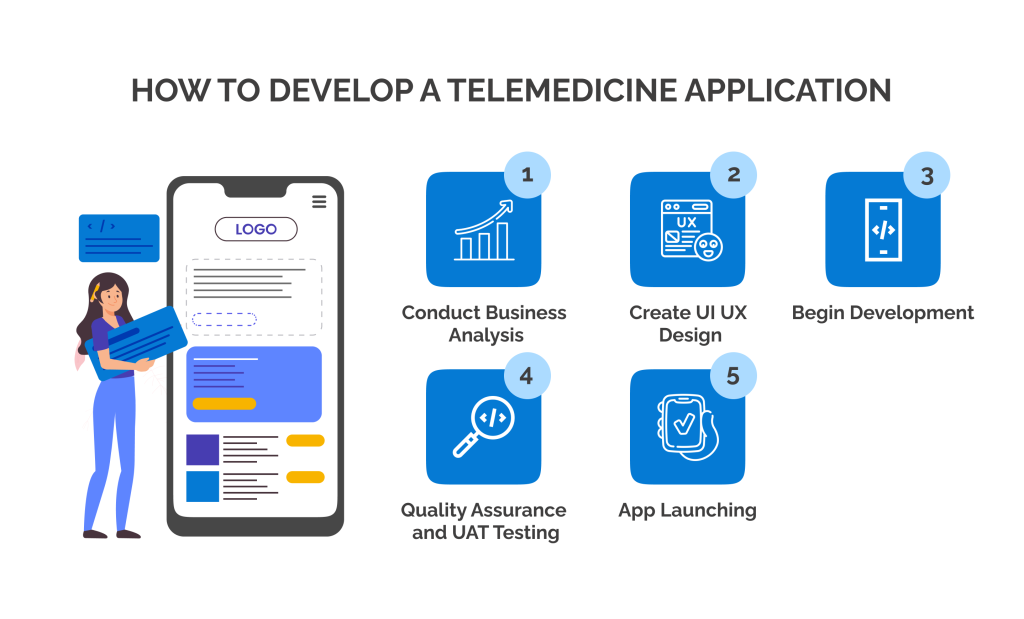
1. Conduct Business Analysis
Business analysis is the process wherein you identify your target market, buyer personas and build a strategy to cater to their problems. It is the first step to planning. By understanding the target audience and knowing the competitors, you will be able to provide a unique value proposition with your telemedicine app that can attract an audience. In this step, you clearly identify the purpose of the app and create a solid business plan.
Your telemedicine app can cater to particular healthcare services (like ophthalmology, dermatology) or specific client types (like children, older adults). It can also target clinics, private hospitals, government hospitals, healthcare specialists, etc. All of these must be decided based on business analysis.
2. Create UI UX Design
With the inputs from the analysis stage, you move on to creating the app’s UI and UX design. A good UI UX design is important to create an appeal and implement ease of usage to the audience. The app’s layout, navigation, interface, etc., depends on the app’s functional requirements and potential user personas. It is important to remember that the focus should be on simplifying the consultation process.
3. Begin Development
Next comes the development stage, which includes early planning, coding, and testing. For telemedicine apps, it is always good to create an MVP with basic features first. This will help to reduce the time to market, understand users’ interests, scale the application further as required, and save your business from losses.
With the numerous benefits that API development offers, integrating APIs into your app will aid your development process positively. APIs for integrating video calls, chats, etc., can really help to simplify coding. In this stage, you can also integrate various technologies that you want to implement in your telemedicine app.
4. Quality Assurance and UAT Testing
To ensure that the telemedicine app you have developed is of high quality and functions properly, extensive testing must be done. It takes care of the app performance, finds bugs, if any, and confirms the flawless working of the app. It further checks if the app adheres to the regulations specified by the respective government for healthcare solutions. Ideally, in a QA process, regular testing happens after each sprint. Then, in the end, there is a final test and also a stress test before release.
5. App Launching
The final step to telemedicine app development is app launching. Depending on the client’s requirements, the app goes live on Google Playstore, Apple Appstore, or both. Along with the launching, you must also start the app marketing campaign. Promote your app through advertising channels to your target audience and get people to download and use the app. Even post-launch, the mobile app developers should provide maintenance support.
What are the Technologies Used in Telemedicine App Development
Healthcare has always welcomed new technologies with open arms. The implementation of cutting-edge technologies has played a tremendous role in the growth of the healthcare industry. It has made possible the enactment of life-changing innovations. Here we will go through the mobile app development trends that find applications in telemedicine solutions.
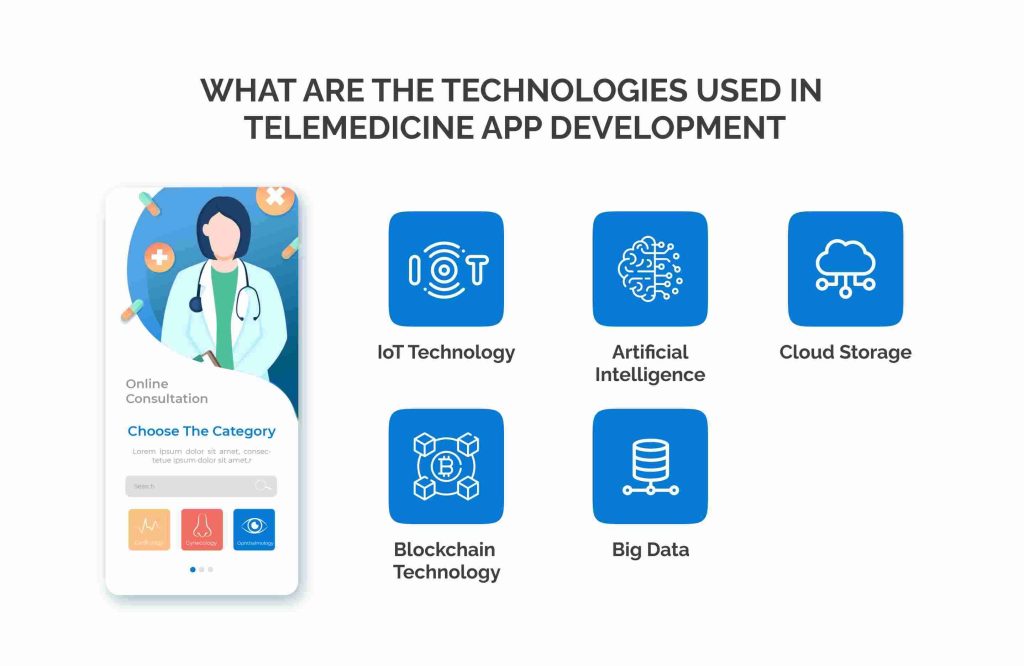
1. IoT Technology
A technology that plays a major role in pushing telemedicine apps beyond its boundaries is IoT. With wearable devices, fitness trackers, etc., constantly monitoring patients’ health status, body vitals, and real-time medical condition is no longer an impossible task. This allows doctors to remotely monitor patients and provide urgent care if required.
2. Artificial Intelligence
AI is transforming several industries, and telemedicine apps are not a stranger to it. It is playing a major role in creating a better healthcare experience for both doctors and patients. AI finds use in diagnostics, prevention, and communication. A popular example of AI is chatbots that help to answer users’ queries and provide information about doctor schedules, consultation, etc.
3. Cloud Storage
The healthcare sector deals with a lot of data. Gathering, storing, and retrieving data when necessary is one of the most important parts of healthcare services. Cloud storage is a beneficial technology that aids in achieving this without the restrictions and cost of on-premise storage solutions. Cloud-based health record systems help to access data whenever required and improve the quality of care immensely.
4. Blockchain Technology
Communication between doctors and patients through voice and video channels is the backbone of telemedicine applications. However, it raises a crucial concern of security. What if the data leaks into unwanted hands? How can maximum security be ensured? The answer is blockchain technology. It encrypts the user data and ensures that no possible breaching can occur.
5. Big Data
We talked about the large amount of information that healthcare services have to deal with on a daily basis. Analyzing this information helps the healthcare providers to give better care and accurate diagnosis. Big data plays a crucial role in processing the information, identifying patterns, conducting research, and forming conclusions. Thus, this technology is a big contributor to the development of innovative telemedicine app models.
What is the Cost of Developing Telemedicine Apps
For mobile applications, giving a rounded figure as the final cost is quite challenging. This is because app development depends on several factors, and the cost is unique to each app. In the case of telemedicine app development, the cost depends on the concept, the functionalities and features, the development approach, and the development team. Apps with basic features cost less, and as advanced features are implemented, cost also goes up.
On average, we can say that developing a telemedicine app takes around 1000-1200 hours. If we take an hourly charge of $50-$80/hour, we can say that the cost to develop a mobile app comes to $50,000 to $100,000. If you cut down on app features, you can reduce the cost. Similarly, if you want a feature-rich solution, the cost may go further high.
How to Choose the Best Company for Your Telemedicine App Development
Telemedicine has gone from being a future prospect to current reality. Investing in telemedicine app development is a brilliant decision at this time, considering how it may become the future of medicine in the coming years. But it brings a question, how to choose the right company. Hiring telemedicine app developers require considerable research and planning. You can either choose in-house app development or outsource app development. Both come with their own merits and demerits. But, the bottom line is that the company should be reliable and trustworthy.
Mindster is a mobile app development company with credible experience in developing apps for the healthcare industry. We have been partners in the development of several on-demand doctor solutions, doctor booking apps, etc. We have excellent knowledge about the healthcare sector and its trends. Further, our years of experience working on hundreds of mobile applications makes us experts in what we do. Do we look like we fit your needs? We would love to hear from you; get in touch with us!
- Android Development3
- Artificial Intelligence27
- Classified App3
- Custom App Development2
- Digital Transformation11
- Doctor Appointment Booking App13
- Dropshipping1
- Ecommerce Apps38
- Education Apps2
- Fintech-Apps34
- Fitness App2
- Flutter3
- Flutter Apps19
- Food Delivery App5
- Grocery App Development1
- Grocery Apps3
- Health Care7
- IoT2
- Loyalty Programs9
- Matrimony Apps1
- Microsoft1
- Mobile App Maintenance2
- Mobile Apps120
- Product Engineering4
- Progressive Web Apps1
- Saas Application2
- Shopify7
- Software Development1
- Taxi Booking Apps7
- Truck Booking App5
- UI UX Design8
- Uncategorized4
- Web App Development1







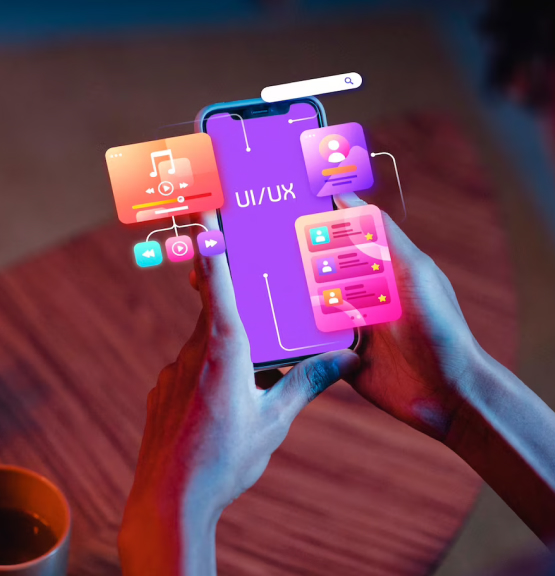
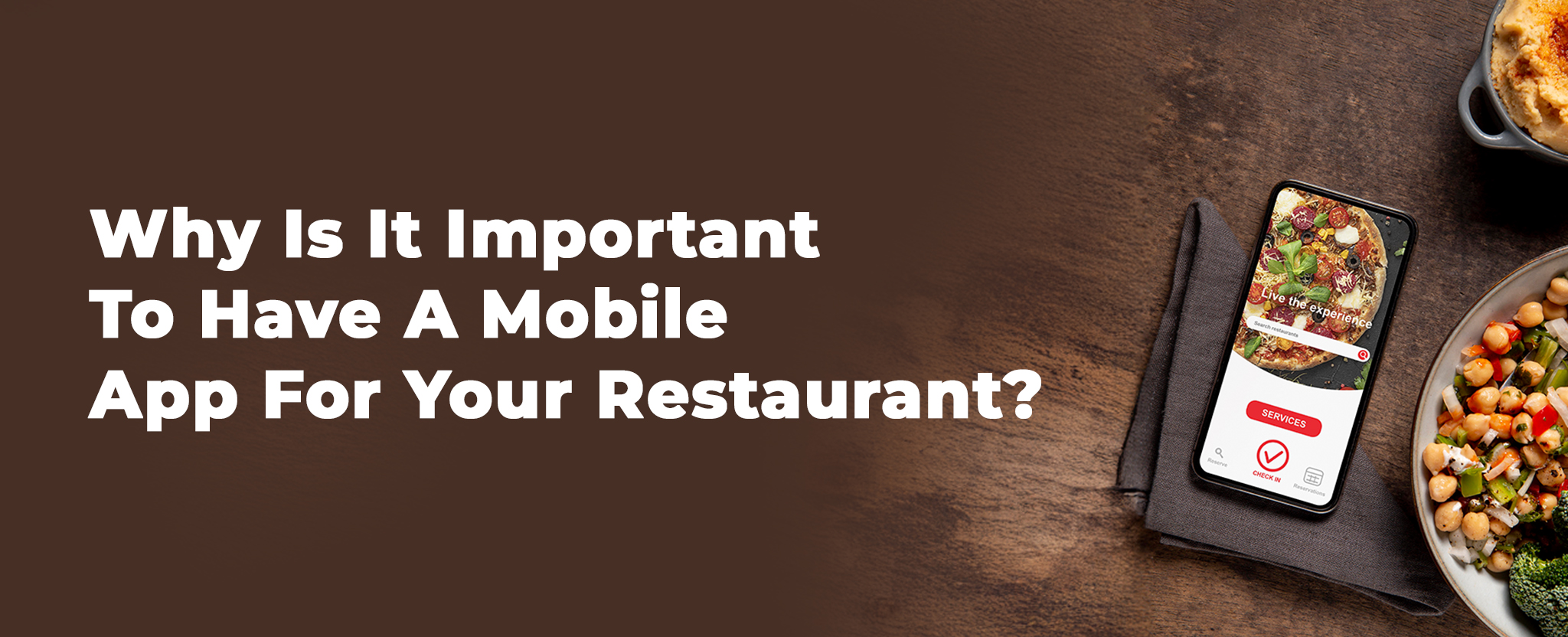
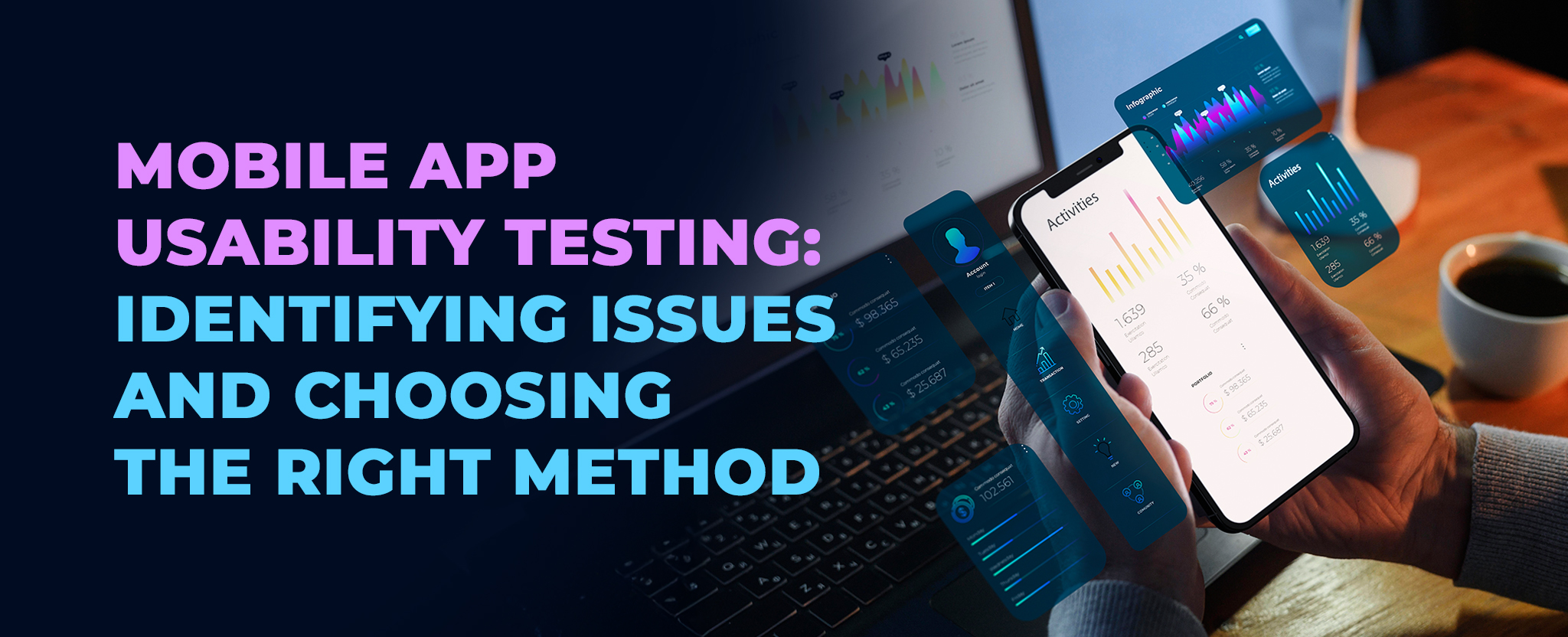

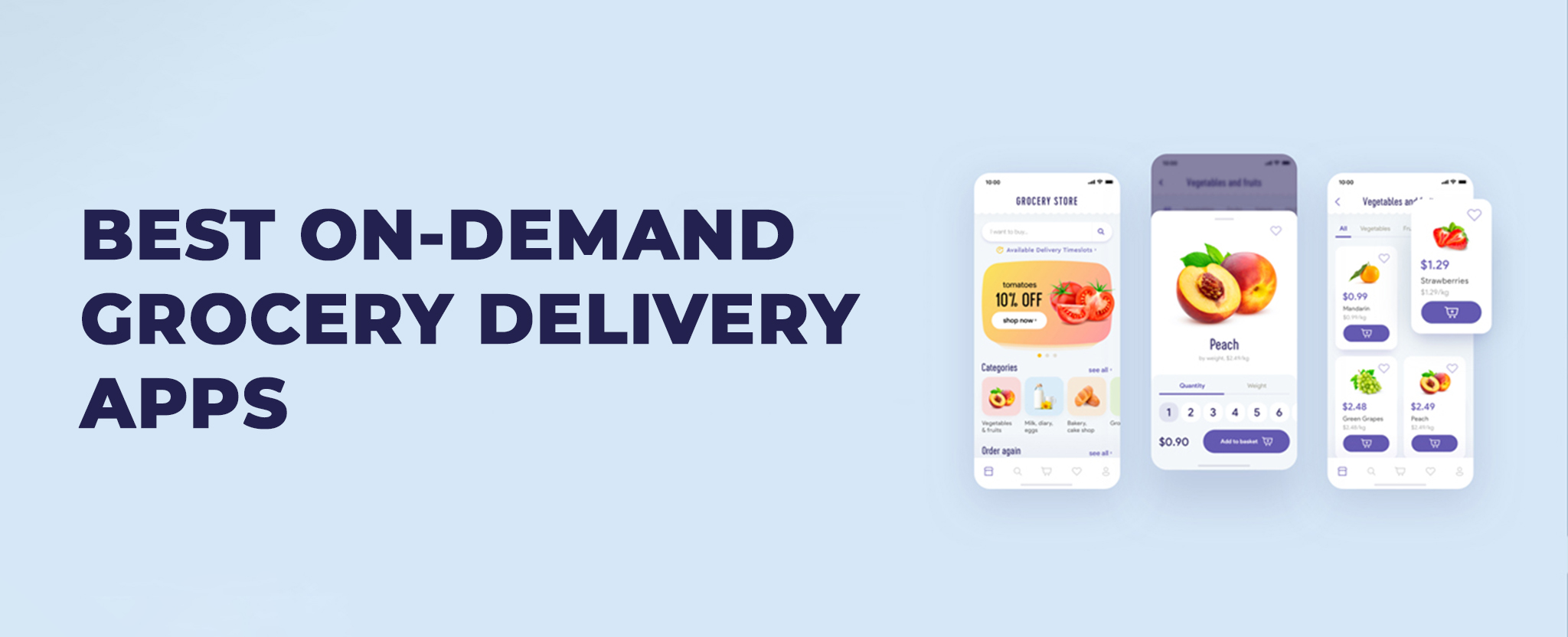






Comments